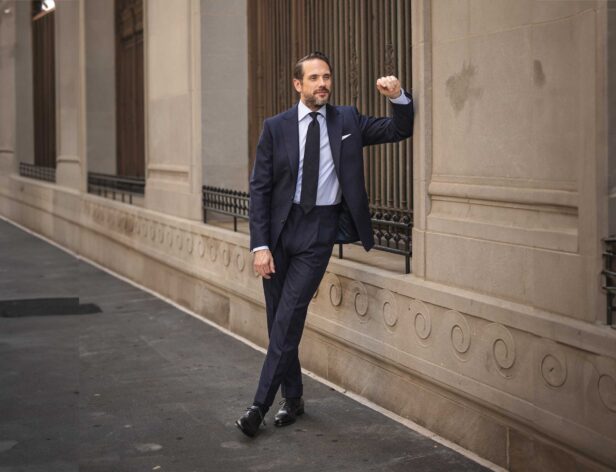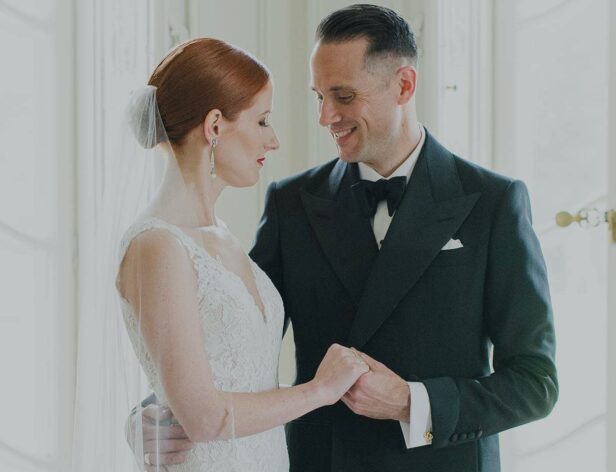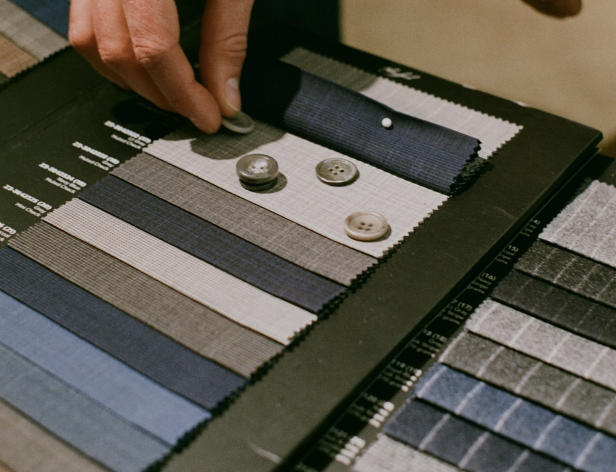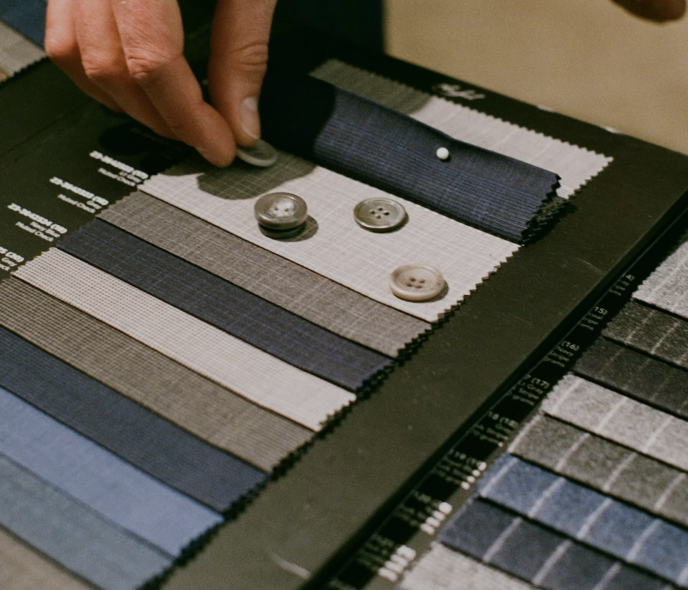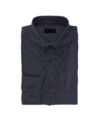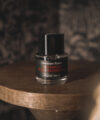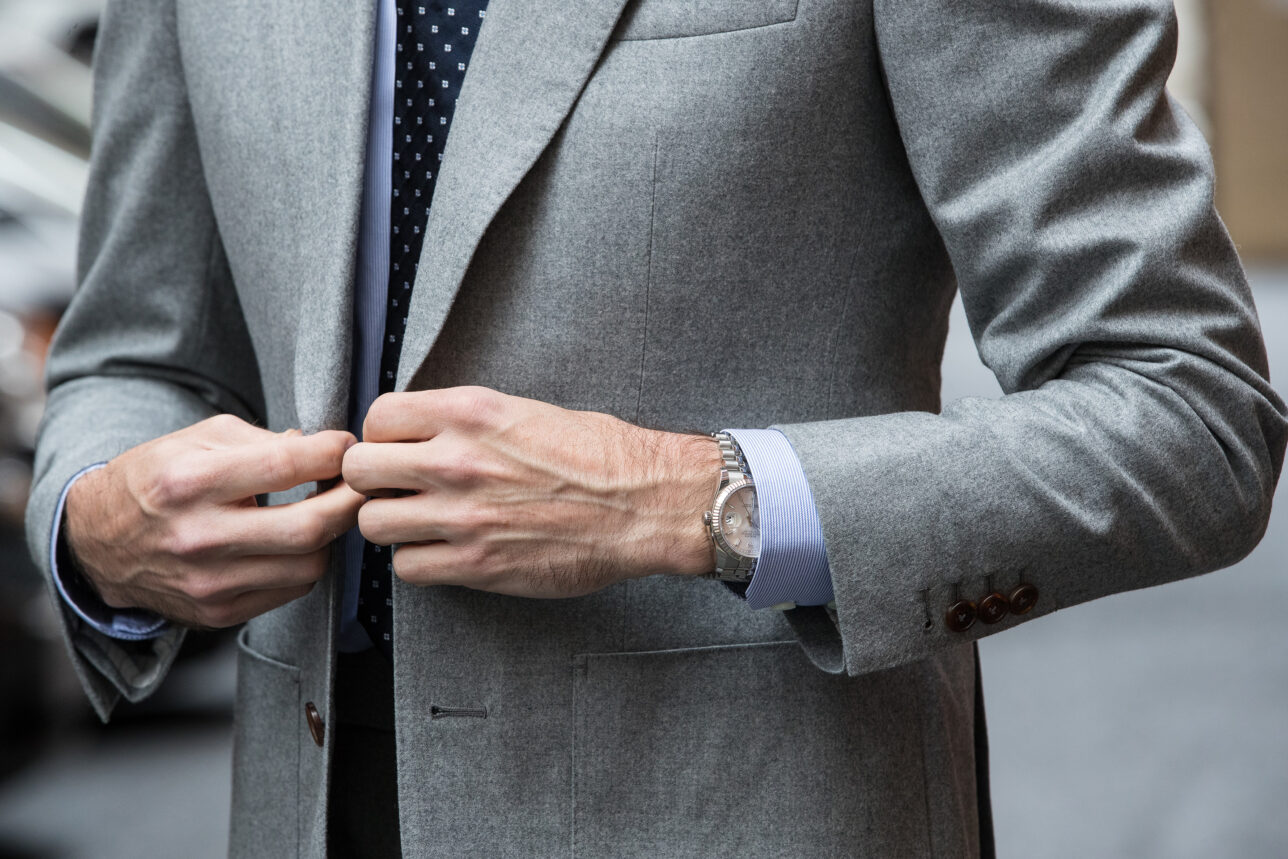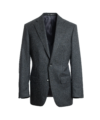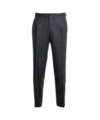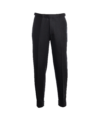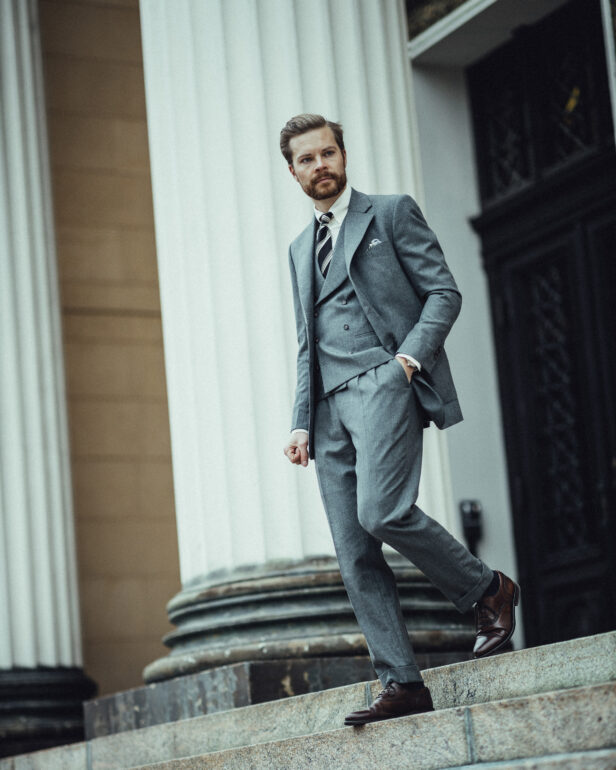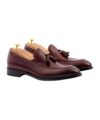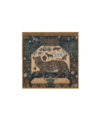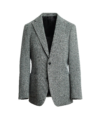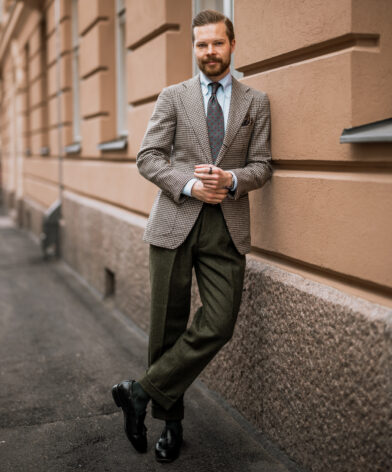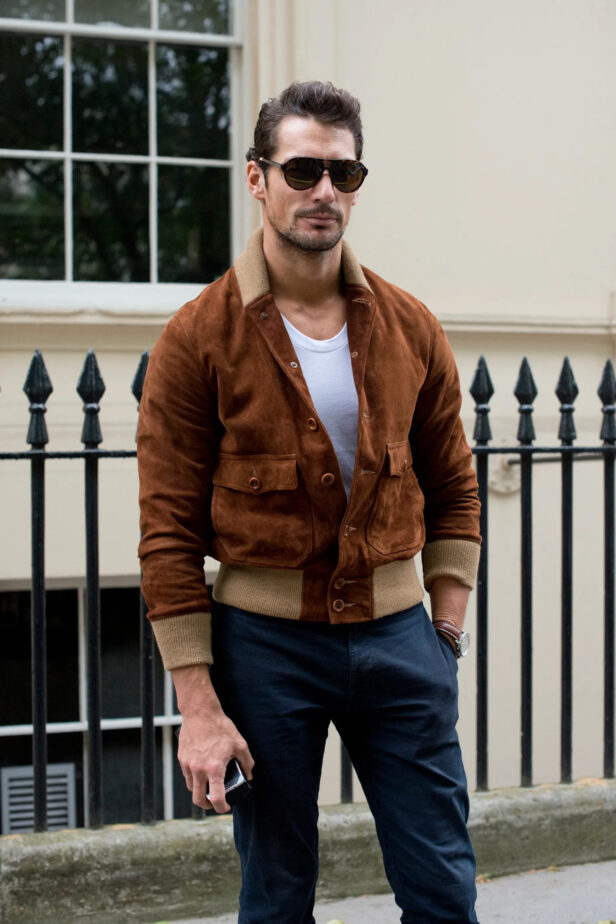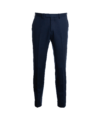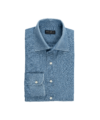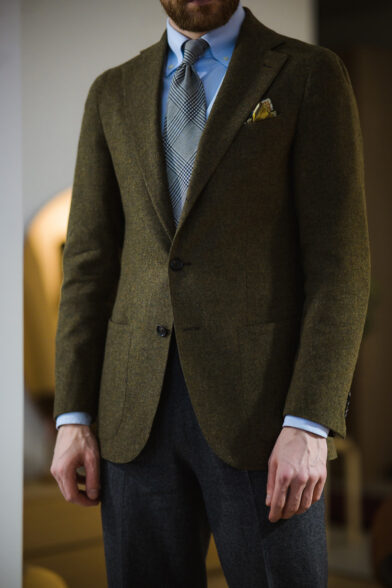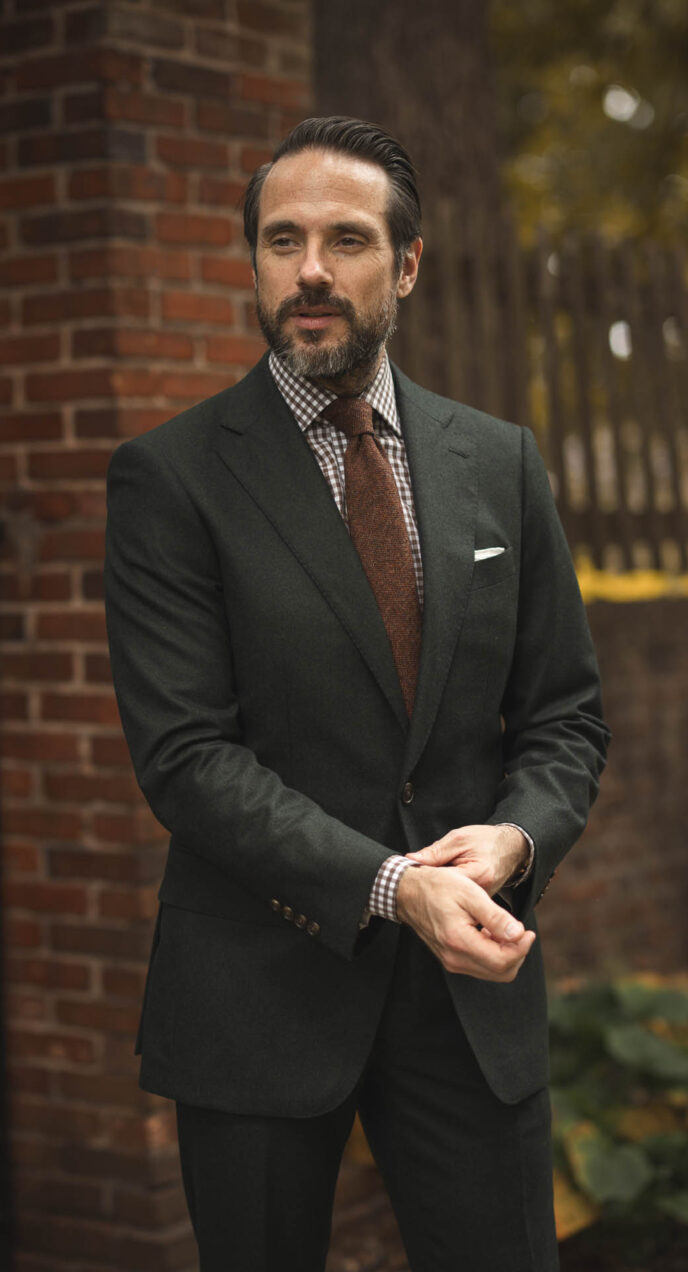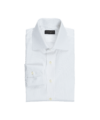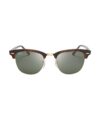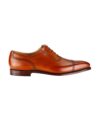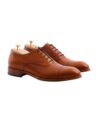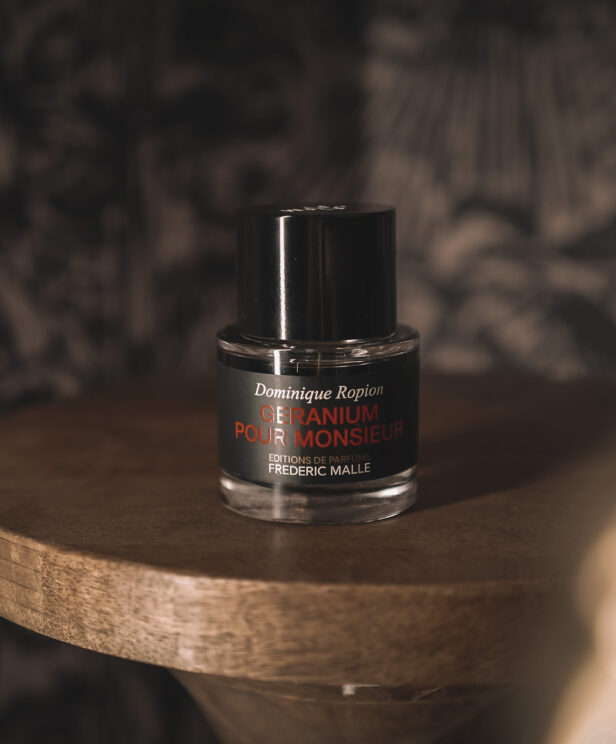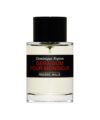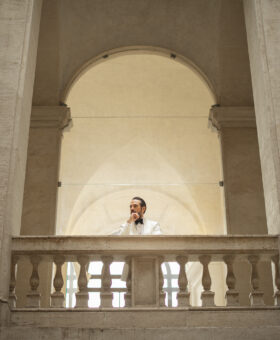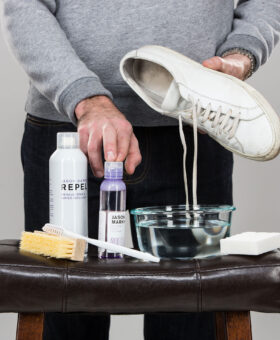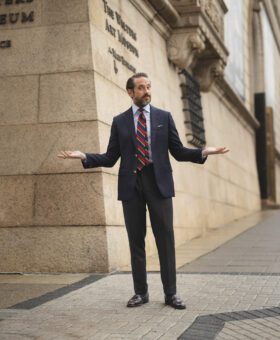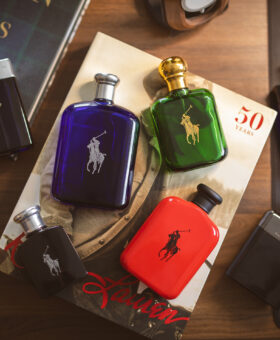
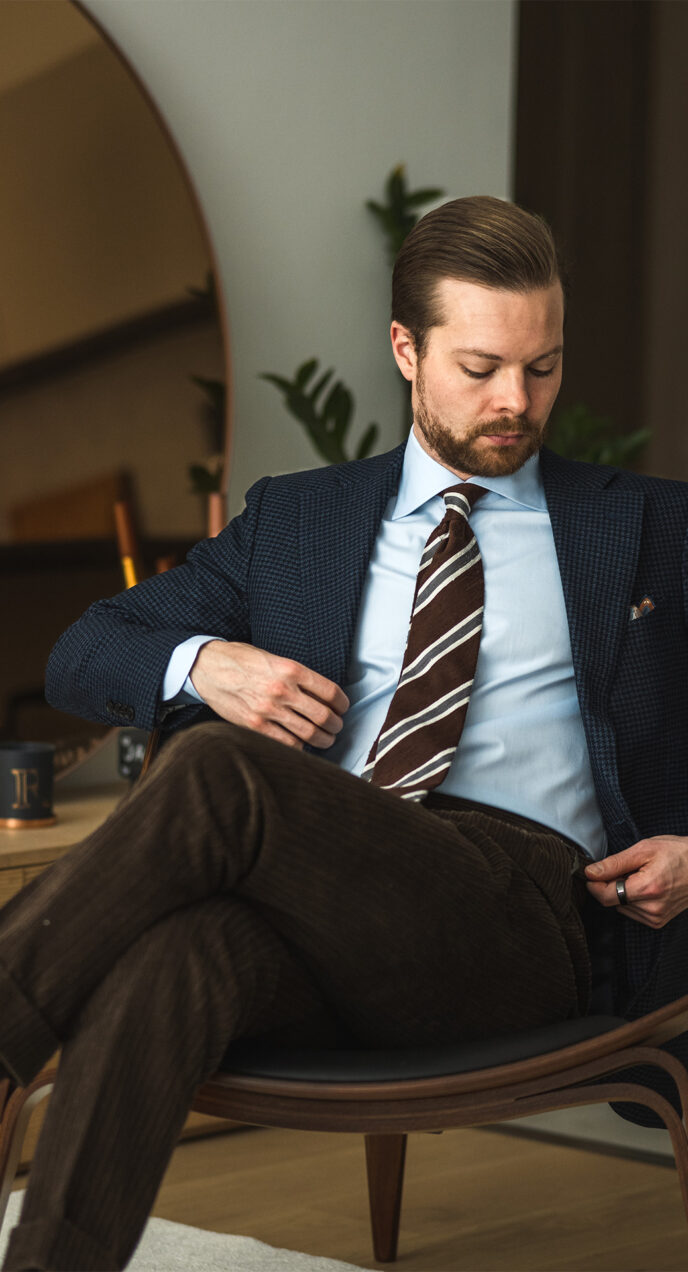
The 6 Best Fabrics For Your Fall Wardrobe
Share
Best Fabrics for Fall
As the season changes and cooler weather approaches, it’s the perfect time to take a look at some of the best fabrics for your fall wardrobe. Fall fabrics are often spun from natural fibers, which usually have better insulating capabilities and will help keep you warm during the colder seasons.
Fall fabrics are generally heavier so they better trap the air next to your body. The trapped air, in turn, is warmed by your body heat and acts as a blanket between your body the cold. Fall fabrics also have more structure than summer fabrics which adds more visual interest to outfits.
For dressing, fall tends to be my favorite season as you can play around with not only different fabric structures but also adding more layers to your outfits. Let’s start by exploring some of the best fabrics for fall, their characteristics, and how you can best incorporate them into your own wardrobe.
Flannel
Flannel is a versatile and comfortable fabric known for its softness and warmth. Flannel fabric is made from wool or cotton, but can also be made from synthetic fibers. In addition to being comfortable and snug, flannel is also characterized by its durability.
A Brief History of Flannel
Flannel as we know it today has its roots in Wales. It was initially made from carded wool and, like now, was known for its warmth and softness.
Flannel, in its current form, has been made since the 17th century, gaining popularity across Europe and then globally because of its durability and affordability. Makers began using flannel for suiting in the 19th century and became a staple in the wardrobes of well-dressed men, particularly from the 1920s to the 1950s.
Then the 1990s grunge music scene propelled flannel shirts into an iconic status, thanks in part to bands like Nirvana and Pearl Jam, as musicians and fans alike adopted flannel shirts as a symbol of the grunge subculture.
How to Wear Flannel
Flannel today comes in a vast variety of colors and patterns and is used to make shirts, trousers, jackets or full suits. The most classic choice in suiting would probably be a solid gray flannel suit or a gray chalk stripe flannel suit.
If you want a more casual everyday look pick a button-down flannel shirt, usually available in different plaid patterns. Pair the shirt with jeans, belt and Chelsea boots for a relaxed and comfortable look. Flannel shirts are also great for layering. You can wear them unbuttoned over your t-shirt for warmth, and if needed, even throw on a denim jacket on top.
In case you want to elevate your style a bit you can’t go wrong dressing in a pair of flannel trousers. These can be odd trousers or part of a suit. I’d suggest going for a pair of gray or brown ones as they tend to pair nicely with a lot of other colors. Put them with a chunky knit turtleneck for a casual look. If you want something casual but smarter, go for a finer turtleneck layered with a sport coat.
To dress up in flannel, the most classic choice is, perhaps, the gray flannel suit. The more formal you wish to be, the darker the shade of gray you should choose. Pair your suit with a crisp white shirt, a tie and a pair of brown oxfords and you’ll look like you just came from the boardroom.
For a classic and formal option to wear flannel, consider going for a gray flannel suit. To increase the formality and add more warmth go for a three-piece or a double-breasted configuration on the suit. The darker the shade of gray on the fabric, the more formal your outfit will be.
Another classic choice is the navy flannel suit. If you own a gray and a navy, they can easily be mixed together. One suggestion is to wear the trousers from the gray together with the jacket from the navy to create the classic “menswear uniform.”
Flannel’s textured finish makes the parts of a flannel suit easier to wear as separates while mixing them with other fabrics. For a chicer look, exchange your shirt for a fine turtleneck.
Tweed
Tweed is a durable and versatile fabric that has a rich history, primarily associated with Scotland and the United Kingdom. It is known for its durability, warmth, distinctive texture and is often linked with a sense of classic British style and rustic charm.
A Brief History of Tweed
Tweed’s origins can be traced back to the early 19th century in Scotland. The name “tweed” is believed to have come from the Scottish word “tweel” or “tweeted”, which means “twill”. It’s thought that a London merchant, misinterpreting the word as “tweed”, gave the fabric its name.
It initially gained popularity as a fabric for estate wear among the Scottish aristocracy and landowners. Favored for its durability and ability to withstand the harsh weather conditions of the Scottish Highlands, estate owners used tweed for outdoor activities like hunting and fishing.
Tweed transitioned from practical outdoor wear to fashionable attire during the late 19th and early 20th century. In the United Kingdom, tweed suits and jackets became wardrobe staples for men.
How to Wear Tweed
Think of the TV series “Peaky Blinders” for inspiration. The characters depicted in the show often wore tweed as part of their distinctive and stylish attire. It can add a touch of classic sophistication and timelessness.
Sport coats, trousers, suits, and long coats can all be made from tweed. For that more formal feel, put a tweed suit with a crisp button down and tie. You can’t go wrong.
To dress tweed down a bit I suggest you go for a dark wash denim jean and paired with a tweed sport coat. Under the sport coat choose either a button down shirt or a light wash denim shirt.
Pairing tweed trousers with a houndstooth wool jacket. Tip: if you wish to wear a patterned tie together with a patterned jacket, make sure that the boldness and size of the patterns vary.
Suede
Suede is a type of leather that is know for its soft and velvety texture. It’s made from the underside of animal hides, typically from the skins of cows, sheep, goats or pigs. It’s also used in a variety of items such as footwear, gloves, jackets, and belts. Also suede, like the fabrics mentioned above, is often associated with fall and winter due to its texture and warmth.
A Brief History of Suede
The term “suede” is derived from the French word “Gants de Suède”, which means “gloves from Sweden”. Suede leather was first used for making gloves in Europe during the 16th century. Wearers prized it for its softness and suppleness, making it comfortable to wear on the hands.
Over time the use of suede expanded beyond gloves to other clothing items and accessories like jackets, vests and shoes. In the mid-20th century Suede experienced a big rise in popularity and was associated with various fashion movements, including the Western-inspired looks of the 1950s and 1960s. Iconic figures like Elvis Presley and Steve McQueen were both known for wearing suede jackets.
How to Wear Suede
The first thing that comes to mind when talking about suede in menswear is shoes as the fabric can add a touch of sophistication to your outfit. My go-to suede shoes for fall are Chukka boots or Chelsea boots. Personally I’d like a pair in a darker shade of brown.
If you want to incorporate more suede into your outfits, especially the more casual ones, you could consider investing in a suede jacket. These come in many variations but my personal favorites are bomber jackets in a beautiful cognac brown. A bomber looks great worn over white t-shirts paired with darker jeans or navy chinos.
Suede is also a great option for accessories such as belts and gloves. Consider matching their color with the color of your shoes.
Denim
Denim needs no introduction. It’s a durable and versatile cotton twill fabric known for its characteristic diagonal ribbing on its surface. It’s commonly used in the production of various clothing items, most notably jeans.
Renowned for its strength and durability, denim fabrics also come in different weights and thicknesses. For fall and winter you should opt for heavier and thicker denim pieces. They will better insulate heat.
A Brief History of Denim
Denim has its origins in Europe. The word “denim” is believed to have been derived from “Serge de Nîmes”, a type of sturdy fabric that was produced in the French city of Nîmes during the 17th century.
The modern history of denim as we know it began in the mid-19th century when Levi Strauss, together with Jacob Davis, patented a new design of durable work pants. They reinforced these pants with rivets at stress points, which made them incredibly strong. This innovation led to the birth of blue jeans.
Throughout the 20th century denim became the standard workwear for laborers and cowboys and later in the mid-20th century, denim jeans became associated with youth rebellion and pop culture. Icons like James Dean and Marlon Brando popularized denim as a symbol of rebellion and coolness.
How to Wear Denim
The first thing that comes to mind when thinking about denim? Jeans. Making denim the perfect fabric for casual wear. For fall we suggest a darker wash as the options for styling are endless. For a comfortable and casual fall style consider putting them with a chunkier knit. If you wish to dress your jeans up a bit, wear an Oxford button down shirt and layer it with a quarter zip knitted shirt. You can also add a sport coat which has a rougher and textured finish – adding layers and visual interest.
If you are wanting denim for a smarter casual look, opt for a denim shirt. Denim shirts not only look great but they are very comfortable (just wear and wash them a couple of times.) Those shirts truly get better with time as they develop a nice patina. Your wardrobe will thank you.
Wool
Wool is a natural fiber and remains extremely popular due to its natural properties, versatility, and the ongoing efforts to make its production more sustainable and ethical. There are several different types of wool each with their own characteristics and uses. In fall though, it’s best to consider heavier wools as they offer warmth coupled comfort and style during those cooling temperatures.
A Brief History of Wool
Wool has a long and rich history. Its use can be traced back to around 10,000 years ago when humans first domesticated sheep. In Ancient Greece and Rome, wool was highly prized for its quality and was extensively used for clothing, including the toga.
The Industrial Revolution brought significant advancements to the wool industry as mechanized spinning and weaving processes increased the efficiency of wool production. Since then its continued to be a popular fabric for clothing; particularly for cold-weather garments and suits due to its natural insulation and moisture-wicking properties.
How to Wear Wool
There are a myriad of different ways to wear wool, from knitwear and scarves to coats and suits. For more casual feels, look to different knitwear like Merino Wool, Lambswool or Cashmere. They come in every color way and cut you could imagine. Opt for a chunkier knitted turtleneck or cardigan and pair it together with jeans for a more relaxed outfit or choose a pair of heavy cotton chinos or flannel trousers to slightly elevate the look.
If you’re feeling more formal you could opt for a heavy worsted wool – which is known for it’s thickness and warmth as it has a dense weave. Worsted wool comes in a variety of textures, colors and patterns. It can have a slightly napped or brushed weave and finish or be smooth. Opt for a smoother finish if you’re looking to up the formality. Pick the more textured finishes for the odd trousers or jackets that are easily paired together with other fabrics like the aforementioned denim.
Corduroy
Corduroy is a durable, textured fabric, known for its distinctive ribbed surface. For centuries its use has extended to a wide range of clothing items. Combining both style and comfort, corduroy has a timeless appeal. It’s a fabric that’s maintained its popularity for decades and continues to be a favorite for creating cozy and stylish clothing.
A Brief History of Corduroy
Like many other fabrics, corduroy has ancient origins. The use of corduroy-like fabrics can be traced back all the way to ancient Egypt. However corduroy as we know it today began to emerge in medieval Europe, particularly in Italy and France.
Corduroy gained popularity in England during the 17th century and was often used for workwear due to its durability and comfort. In the 20th century, corduroy experienced a surge in popularity when young people embraced corduroy as a symbol of rebellion against traditional fashion norms.
How to Wear Corduroy
I tend to reach for corduroy trousers when I want to elevate my look a bit more than jeans but still stay relatively casual. Personally, I love corduroy fabrics in earthy tones such as brown and green.
In my opinion, another corduroy garment to consider is the overshirt. It’s a great layering piece and goes very nicely with jeans. Think a darker wash denim jean and then a lighter shade of brown or beige for the corduroy overshirt.
If you like to dress up, and be a little untraditional, opt for a corduroy suit. They are considered more casual in nature and they can quite easily also be broken up and worn as separate pieces. To keep it easy, however, choose more traditional earthy colors like brown, olive and tan.
Your Most Stylish Fall Yet
All of the fabrics mentioned above can be worn in various different ways. Plus, you can build your outfits mixing different fabrics, colors and patterns. Fall is also the perfect season to experiment with layers. Combining fabrics with rich texture in varying layers is the perfect way to add visual interest to your outfits.
For your dressed up looks, we recommend wearing flannel, tweed and wool. For your more casual outfits, opt for denim, corduroy and suede.
However, don’t feel restricted to wearing just one or two types of fabrics in your closet. Go ahead and play around—try wearing a variety of fabrics paired together in different layers of your outfit. You will feel as great as you look.
